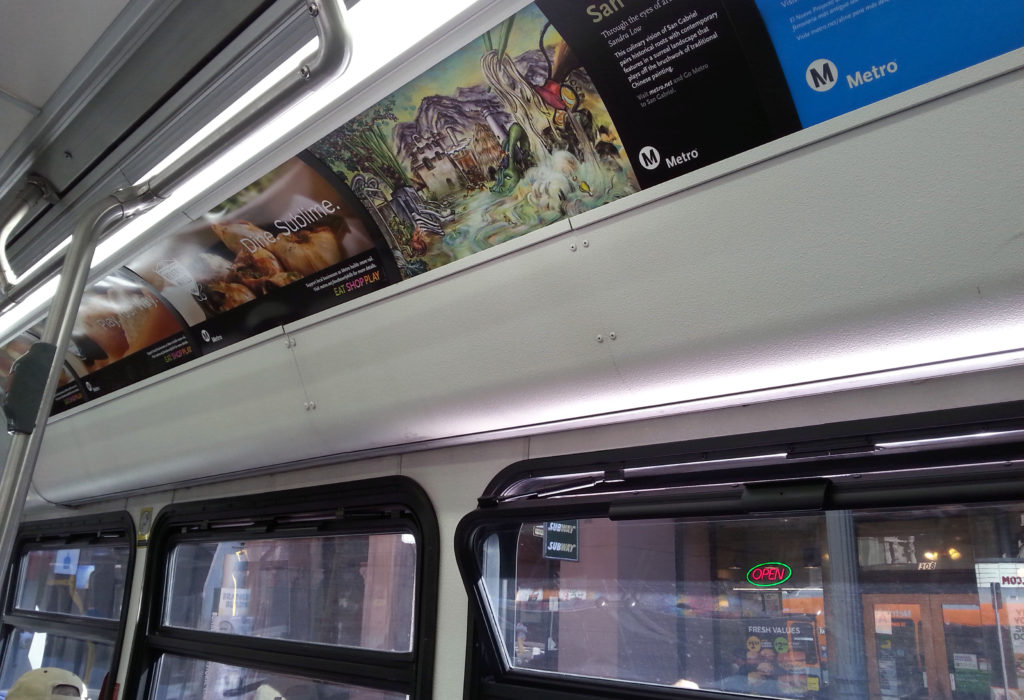Los Angeles Metro commissioned this poster representing the city of San Gabriel in 2019. It has been displayed system wide in their bus fleet, from December 2019 through February 2020. L.A. proper and the Westside sucks up all the air when we think about Los Angeles, so I think it’s really cool Metro invests in this series to highlight all the neighborhoods Metro serves. http://metro.net/art

Installation View. Courtesy of Los Angeles County Metropolitan Transportation Authority (LA Metro).
My vision of San Gabriel highlights its historical roots with contemporary features of the city in a whimsical, surreal landscape that plays off of the tradition of Chinese brush painting. In regards to its history, the Mission San Gabriel Arcángel and the Gabrielino-Tongva Native Americans who built the mission laid the foundation for the city as well as the founding of Los Angeles itself. In addition to the Mission, a dome-shaped home typical of the Tongva is pictured. Acorns and yucca plants, main staples of the Tongva diet, are also included. The Mission once boasted of cultivating the largest vineyard in California, so a grapevine wraps itself out of and around a utensil caddy holding chopsticks and Asian-style spoons.
Often found on tables of Vietnamese restaurants, this and other nods to Asian cuisine and culture are interspersed throughout the landscape to acknowledge and celebrate this Asian majority city that hosts some of the best Asian restaurants in the metropolitan area. Noodle and soy sauce “waterfalls” froth into a multicolored broth where bean sprouts frolic. Like Venetian gondolas, spoons bearing soup dumplings glide along the surface. Tapioca boba balls in an oversized tea drink echo the Tongva’s acorns that float nearby. A map of foot reflexology areas references the many foot massage businesses across the city.
The painting also features the unique lighthouse and serpent slide found at “La Laguna de San Gabriel” at Vincent Lugo Park in San Gabriel. Designed by the Mexican American artist Benjamin Dominguez in 1965, the concrete play sculptures are a true delight for the neighborhood’s young at heart (me included) and is listed on the National Register of Historical Places.
The entire scene is set against a stylized version of the San Gabriel Mountains reminiscent of Chinese landscape painting. While mostly obscured, the background is also decorated with a pattern incorporating mission bells and acorns. The water elements refer to multiple things: the pond that was located east of the Mission, the Mission’s advanced irrigation methods, the water theme of Dominguez’s sculptures, and the multicultural “broth” of its past and current residents.
Rounded, parabolic shapes repeat throughout the painting, from the Mission, the Tongva home, the mountains, noodles, the top of the bus shelter, to the waves in the broth. The rounded curve is an inclusive form that wraps around us without closing us off; it goes up and down as life cycles up and down. My painting represents San Gabriel as a city full of cycles of change, and full of history and culture that is warm and inclusive.